
Strategic New-Media Marketing is Worth the Investment
New-media marketing seems like something that should be easy to understand and execute, doesn’t it? You’d be surprised, as I was, to study the many ways members of our industry approach marketing with new-media technologies (including social media, websites, e-newsletters, etc.).
Many horticultural business managers are not trained to write compelling content or maximize images of our incredibly beautiful products in their marketing.
The difference between great marketing of horticultural products and less-than-ideal marketing is not due to a lack of passion. More likely it’s because business owners entered into the world of horticulture because they loved plants … not sitting behind a computer.
The question is, “What’s holding them back from sharing their passion for horticulture to market their business?”
Indeed, what I saw online as I studied business use of Facebook were nurseries and garden centers struggling to tell their story.
Businesses that seemed adept at traditional advertising (newspaper, billboards, television, radio, print, etc.) were lost when it came to cross-platform brand presence and relationship marketing. I knew I could help, but not alone.
 I called on colleagues at Kansas State University who had expertise I lacked: Lauri Baker (agricultural communications) had researched social media in the past, and Hikaru Peterson (agricultural economics) knew how to measure real nancial impacts.
I called on colleagues at Kansas State University who had expertise I lacked: Lauri Baker (agricultural communications) had researched social media in the past, and Hikaru Peterson (agricultural economics) knew how to measure real nancial impacts.
Over the last ve years we became a tight-knit team, driven to discover solutions that help small, often rural, agricultural businesses become and remain nancially sustainable through new-media marketing.
Understanding the Perspective
In 2012 we set out to conduct a pilot study of new-media marketing collaboration, combining a local garden center and a local photographer whose business was based entirely on social media.
Our hypothesis was that if we could get the two businesses’ followers to integrate for a joint event (family holiday portraits among garden center holiday products) it would bring both businesses greater success.
We learned that coordination would be key as photography clients were a bit quicker to respond than garden center customers (especially in late fall) and that incentives to shop in the store needed to be enticing.
We also discovered a disconnect among leadership in the brick-and-mortar store on the importance of an integrated online presence for the garden center — consistent messaging among all types of marketing. This led to our next set of questions: What do owners, managers and customers think of new-media marketing efforts, and what resources do they need to succeed?
The following year, 2013, our rst grant proposal was funded by the USDA Federal State Marketing Improvement Program (FSMIP).
This allowed us to fund two graduate students to help answer those questions — one on the communications side and one on the economics side.
Our rst student, Scott Stebner, conducted interviews and focus groups across a range of garden center business types and metro/rural demographics.
We weren’t too surprised that many of the owners and managers were skeptical about the return on investment for new-media marketing.
Many also felt it would take too much time and effort in addition to their current marketing practices. Few of the businesses had full-time employees dedicated to marketing tasks, which meant that whomever was responsible for it also had other duties (often MANY other duties).
However, almost all of the businesses maintained a marketing plan for traditional media but had never thought to integrate their new-media marketing efforts.
Many believed social media required spontaneity rather than planning and that they could not attempt to sell to followers. Understanding this perspective helped make sense of their aversion to new-media marketing investments.
What surprised us most was the response from customers. While they disliked frequent selling tactics, they wanted to be made aware of sales. They offered great suggestions for content they found interesting and relevant such as new plant deliveries, products selling out quickly and educational content. They were willing to share positive garden center experiences with their friends on social media but were often selective with their willingness to engage with social media posts.
Customers also commented that helpful sales staff made them loyal customers. It should be noted that customers were looking in many places online (Google, Pinterest, email) for local gardening information.
If websites weren’t attractive, intuitive or helpful, customers became frustrated and had a poor impression of the business.
Our second graduate student, Becatien Yao, looked at the economic side of new-media marketing in horticultural businesses. We conducted a nationwide study to understand how marketing tools were used, resources were invested and return on investment.
Results from this study indicated larger businesses invested more
in marketing. That should not be surprising.
We were encouraged by data indicating that it doesn’t take as many hours as you may think to achieve results you want. Training in new-media marketing skills will be key to success.
To that end, we have created content on our learning resource, RuralEngagement.org, to help bridge the gap between knowing change is needed and making change happen.
Practical Steps
In 2015 we created The Center for Rural Enterprise Engagement at Kansas State University to house our combined efforts in research, teaching and extension outreach.
Together we are answering questions and creating resources that will help you be more successful and pro table.
We’ve now hosted two New- Media Marketing Boot Camps that help agricultural businesses, rural community leaders and extension personnel learn how to excel in telling their story online. We also have an active Facebook presence and continue to curate and create relevant content on our learning resource.
Our goal is to help you navigate the constantly changing online environment by translating new-media marketing information in a way that makes sense for agricultural businesses, especially garden centers and nurseries.
So what are some practical steps for you as you work on your new-media marketing strategy?
- Claim your business identity on Google. This is as simple as searching for your business name and following instructions to request ownership through Google. This ensures that when potential customers search for you, they find current, correct information and can know that you are still operating. You’d be surprised how many businesses haven’t done this.
- Review your current marketing practices. What is going well? What could be improved? Are your digital tools consistent with branding and writing voice? Are you pleased with your website and e-newsletter servicer?
- Begin integrating new-media marketing into your editorial calendar. Write and schedule content to post in advance so you don’t have to think about it when things get busy.
- When the spring season is over, do some experiments with your posts to learn more about your customers and their habits. We call this A/B split testing. You can test different versions of an e-newsletter or different times of the day for it to be delivered, for example.
- Use analytics to set benchmarks for customer engagement each quarter and then study types of content with the most engagement to plan ahead. Check out RuralEngagement.org for resources to help.
Next Steps
Currently we are investigating that curious customer engagement piece. What will customers respond to?
We’re deep in the trenches of our second FSMIP grant “Courting the Consumer” and look forward to reporting those results just as soon as we can.
Recent research projects with undergraduate student researchers have investigated e-commerce, use of 360-degree video and plant purchasing preferences of millennial-aged consumers.
We’re intrigued by the idea of storytelling to enhance online presence and gain market share. We feel strongly that today’s university graduates need a set of new-media marketing skills. I think it’s safe to say we’re fascinated by the world of new-media marketing and how it can be harnessed to help agricultural businesses tell their story well, entice new and existing customers, and help grow businesses. Visit us online and let us encourage and help you learn the skills you need to stand out.
Resources:
- Stebner, S., C.R. Boyer, L.M. Baker,H.H. Peterson. 2017. Relationship marketing: A qualitative case study of new-media marketing use by Kansas garden centers. Horticulturae 3(1), 26; doi:10.3390/horticulturae3010026.
- Stebner, S., L.M. Baker, H.H. Peterson, and C.R. Boyer. 2017. Marketing with more: An in-depth look at relationship marketing with new media in the green industry. J. of Appl. Communications 101:7-18. DOI: https://doi.org/10.4148/1051- 0834.1001

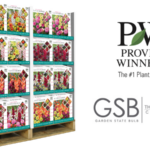






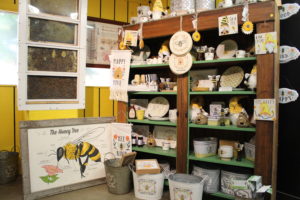





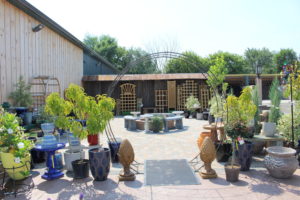
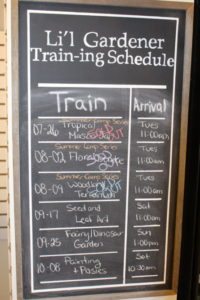
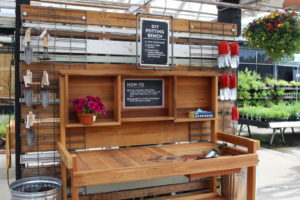
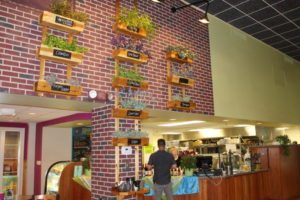
 Videos
Videos





